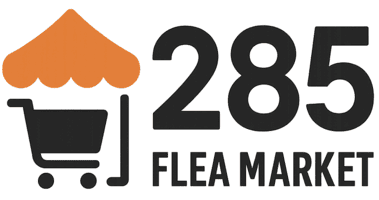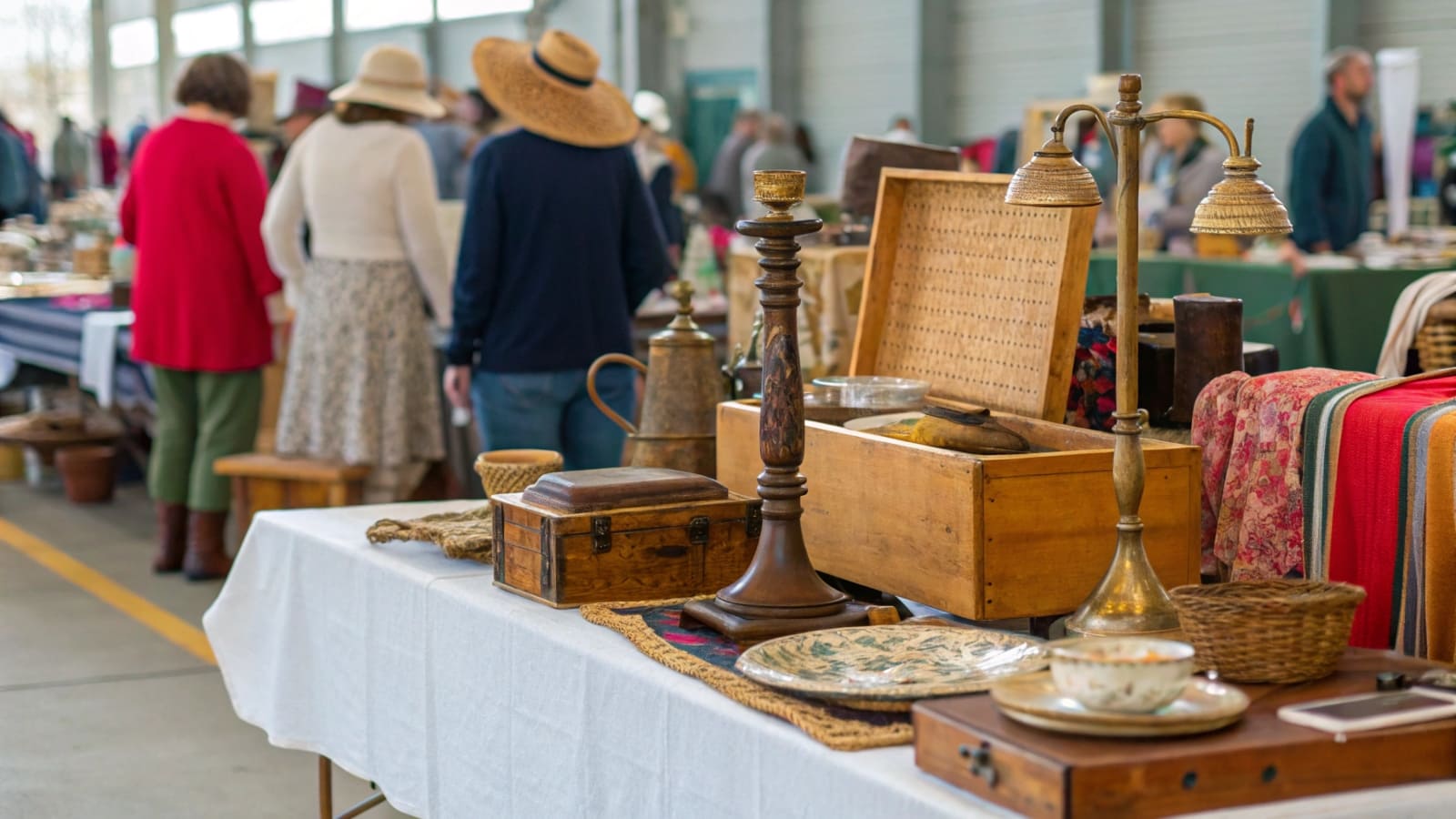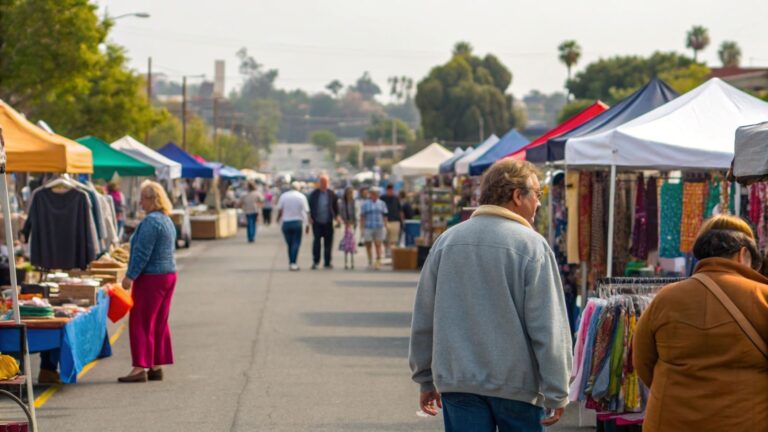There’s nothing quite like the Columbus Flea Market in New Jersey. Part marketplace, part carnival, part social experiment—it’s where antiques meet knock-off sneakers, fresh fruit competes with funnel cake, and every weekend feels like a new roll of the dice. For buyers, it’s a treasure hunt. For sellers, it’s an opportunity—sometimes a madhouse, sometimes a goldmine. If you’ve ever walked through those aisles and thought, I could sell here, this guide is for you. We’ll dig deep into how to actually get a table, what it costs, what time you need to show up, how not to embarrass yourself as a rookie vendor, and how to make the whole experience worth your time.
Understanding the Market
The Basics
Columbus Farmers Market (often just called Columbus Flea) is one of the largest and most well-known flea markets in the region. It operates year-round, primarily on Thursdays, Saturdays, and Sundays. Vendors can rent space on a daily basis or secure a monthly reserved spot, depending on their selling style and level of commitment.
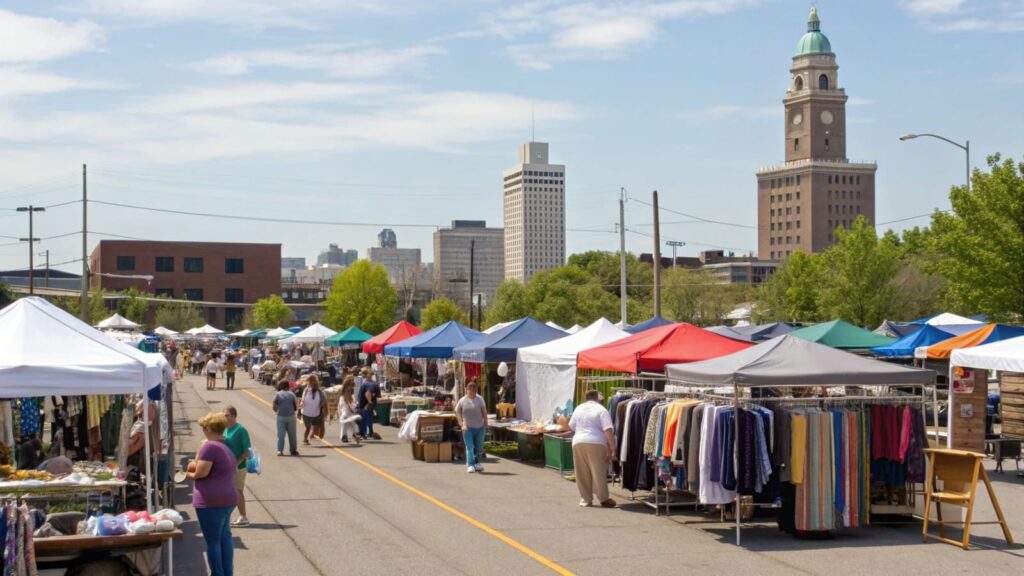
Daily vs. Monthly Vendors
- Daily Vendors: You pay when you show up, first come first served. It’s flexible but competitive—you may be in line in the dead of night hoping for a spot.
- Monthly Vendors: You secure your spot by paying in advance at the Market Office (the orange building). This means you have consistency—no fighting for space week to week.
The Atmosphere
If you’ve never sold at a flea market before, imagine controlled chaos. Vans and trucks roll in before dawn. People are haggling before you’ve even finished setting up. Regulars have their territories. Newbies sometimes get swallowed alive. But with the right prep, you can thrive.
Costs and Fees
Daily Rental Fees
The fee structure depends on the day of the week and whether you’re selling new or used merchandise:
- Thursday: $25 (used), $35 (new)
- Saturday: $25 flat for both new and used
- Sunday: $30 (used), $40 (new)
Monthly Reserved Rates
Monthly rates vary slightly but generally look like this:
- Thursday: $70 (used), $90 (new)
- Saturday: $65 (used or new)
- Sunday: $90 (used), $110 (new)
Pavilion and Specialty Spots
If you’re lucky (and willing to pay more), you can land a covered pavilion space. These start around $100–$140 monthly, depending on the day and row. They protect you from rain and sun—worth considering if you plan to sell long-term.
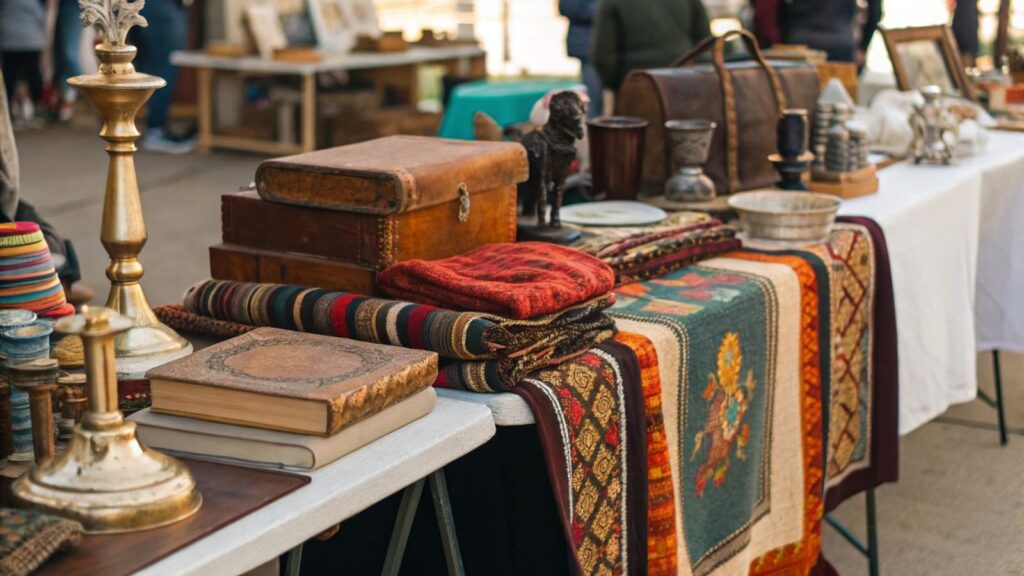
Other Costs
Don’t forget:
- Tables and chairs (if you don’t bring your own, you’re stuck).
- A canopy or tent for shade.
- Gas for early morning drives.
- Trash removal fees if you don’t clean up your spot (minimum $20).
Getting a Table Step by Step
Step 1: Decide Between Daily and Monthly
Ask yourself: are you testing the waters, or do you want a permanent gig? If you’re brand new, daily is the safer option. If you already know you’ll commit, monthly will save you stress.
Step 2: Prepare Your Paperwork and ID
All vendors are required to present a valid photo ID. If you’re selling new goods in bulk, you may also need a tax ID—check with the office.
Step 3: Arrive at the Right Time
- Daily vendors: Line up at the gate early. On busy weekends, people show up as early as 2 AM. Gates typically open around 6–7 AM, but by then the line can already be massive.
- Monthly vendors: You get earlier access, usually an hour before the daily crowd.
Step 4: Pay and Get Your Spot
Daily vendors pay cash at the gate. Monthly vendors pay at the office in advance. Once you’ve paid, you’ll be directed to your space (or pointed to an open row if daily).
Step 5: Set Up Quickly
The unspoken rule: the faster you set up, the faster you can start making sales. Buyers don’t wait politely—many will start browsing your boxes before you even unfold your table.
What to Bring
Essential Gear
- Tables (folding 6’ or 8’ works best)
- Chairs (you’ll thank yourself by noon)
- Canopy/tent (10×10 pop-ups are standard)
- Weights or stakes (wind is no joke)
- Tarps or plastic sheets (for surprise rain)
- Trash bags (avoid cleanup fees)
Display Tools
- Plastic bins for easy packing and unpacking
- Tablecloths to make your space look cleaner
- Small shelves or risers to add vertical space
- Price tags (not required, but smart)
Comfort and Survival Items
- Sunscreen
- Drinks and snacks (unless you want to spend profits at the food court)
- Cash box with change (ones and fives are gold)
- A buddy to watch your stuff when you need a bathroom break
Strategies for Success
Location, Location, Location
If you’re a daily vendor, you won’t always get your dream spot. But if you go monthly, pick carefully. High foot traffic near food vendors or main walkways usually means more sales. That said, sometimes quieter corners work better for niche sellers (shoppers linger longer).
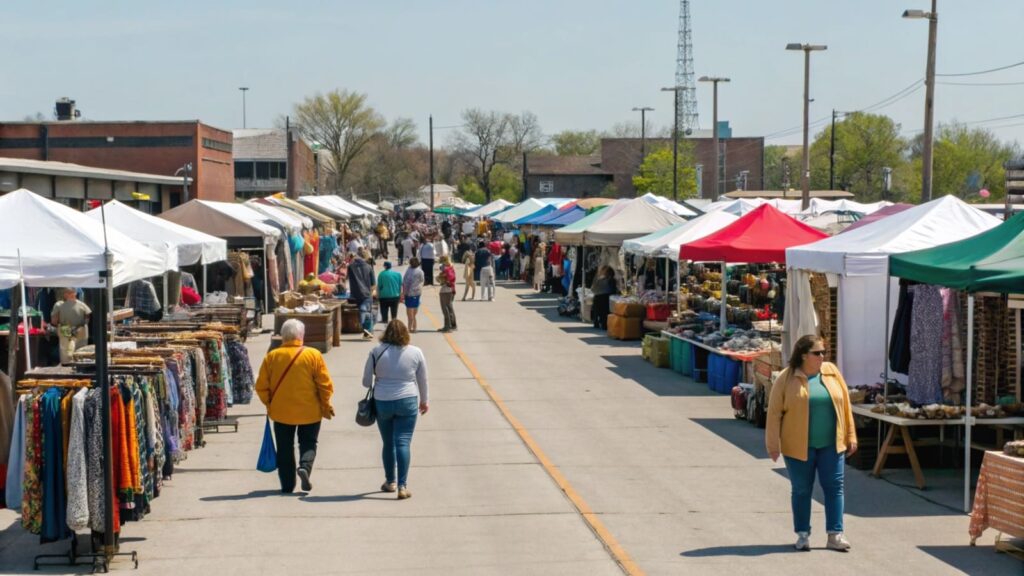
Early Bird Advantage
The busiest shopping often happens early in the morning. Regulars and resellers swoop in looking for deals before casual shoppers arrive. Don’t underestimate that 7–9 AM window.
Pricing and Negotiation
Columbus is a haggler’s paradise. Price higher than your bottom line, expect people to negotiate, and don’t take it personally when someone lowballs you. It’s part of the culture.
Build Relationships
Regular buyers and other vendors can become your best allies. Chat, trade tips, maybe even swap merchandise. A little goodwill can go a long way.
Common Mistakes to Avoid
Showing Up Late
If you arrive after 8 or 9 AM, forget it. Spaces are taken, buyers are already shopping, and you’re playing catch-up.
Not Bringing Enough Change
If your first customer of the day hands you a $100 bill and you can’t break it, you’ve lost that sale. Always carry plenty of small bills.
Poor Display
Dumping stuff in piles works for bargain hunters, but if you’re selling collectibles or anything delicate, presentation matters.
Ignoring the Weather
A sunny morning can turn into a thunderstorm by afternoon. Bring tarps, weights, and waterproof containers—or watch your merchandise get ruined.
Tips from Veteran Vendors
Visit Before You Sell
Spend a morning walking the flea market just to observe. Note where the crowds gather, how people set up, and what sells fast.
Think Seasonally
What sells in May may flop in December. Garden tools, summer clothes, and outdoor gear shine in spring. Winter coats and holiday items move in late fall.
Diversify Your Table
Even if you specialize (say, vintage vinyl), throw in some lower-priced impulse buys. Not everyone wants to drop $40 on a record, but a $2 trinket might keep them browsing longer.
Stay Flexible
Some days you’ll sell out, other days you’ll barely cover gas. That’s flea market life. Adjust, experiment, and don’t get discouraged.
Beyond the Basics: Thinking Like a Business
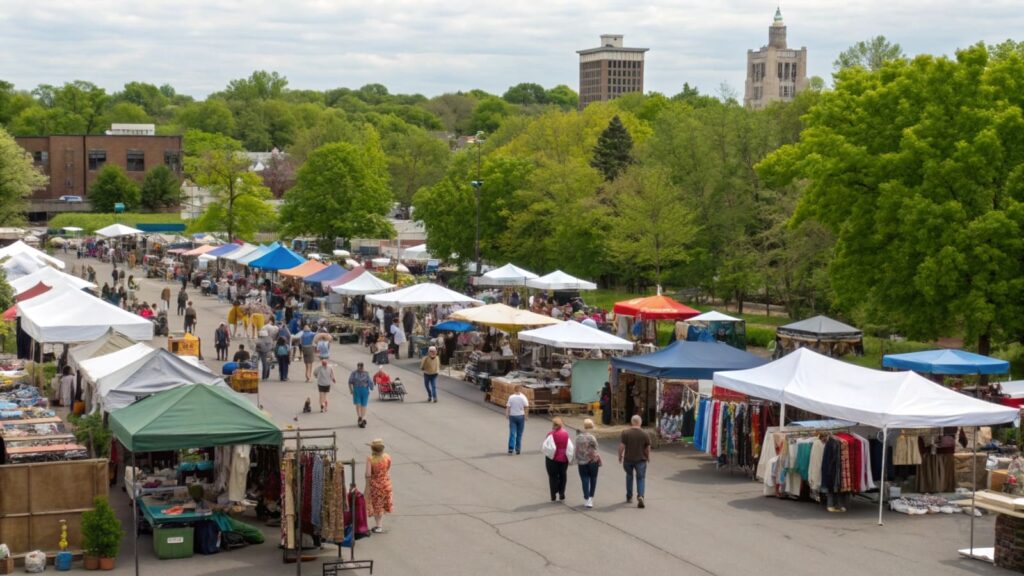
Tracking Sales
Keep a notebook or use a simple app to track what sells. Patterns emerge—certain days, certain categories, certain price points.
Marketing Yourself
Regular vendors sometimes hand out business cards, set up social media pages, or even keep repeat customers updated with texts about new stock.
Building Inventory
Don’t treat the flea like a one-off yard sale. If you want to stick around, start sourcing inventory strategically: estate sales, storage units, auctions, wholesale lots.
Knowing When to Quit
Sometimes, the best move is to pack up early if traffic dies. Don’t feel obligated to sit in the heat for three extra hours if sales have completely stopped.
FAQ
How early should I arrive to get a table?
Daily vendors often arrive as early as 2 AM on busy days. The earlier you get in line, the better chance you have of getting a good spot.
Do I need to bring my own table?
Yes, you should. Some spaces may have tables left behind, but it’s not guaranteed. A folding table is essential.
Can I reserve a specific spot?
Only monthly vendors can secure a reserved spot in advance. Daily vendors are assigned spots upon arrival.
What sells best at Columbus Flea Market?
It depends on the season, but used goods, antiques, tools, collectibles, clothes, and affordable impulse buys generally move well.
Do I need a business license or tax ID?
For casual sellers of used goods, a photo ID is usually enough. If you sell new merchandise in bulk, you may need a tax ID. Check with the office for specifics.
Can I sell food or drinks?
Food and drink sales are typically restricted to licensed vendors approved by the market. Regular sellers cannot just set up a food stand.
What happens if it rains?
The market is open rain or shine. Bring tarps, tents, and covers to protect your goods. Pavilion spots are covered but more expensive.
Are there bathrooms for vendors?
Yes, the market has restroom facilities, but bring a buddy to watch your booth if you need to step away.
Do buyers really haggle that much?
Yes—expect it. Price your items with wiggle room for negotiation.
What time does the market usually slow down?
Peak shopping is often in the morning through early afternoon. By 2 or 3 PM, crowds thin out and vendors start packing up.
Conclusion
Getting a table at Columbus Flea Market isn’t complicated, but it is demanding. You’ll battle early mornings, unpredictable weather, haggling shoppers, and stiff competition. But if you prepare well—choosing the right rental option, arriving early, setting up smart, and adapting on the fly—you can turn it into more than just a hustle. It can be a steady side income, a way to test a business idea, or even just a fun way to clear out your garage while making some cash.
So pack your table, grab your coffee, and set that alarm clock for a ridiculous hour. Columbus Flea waits for no one.
